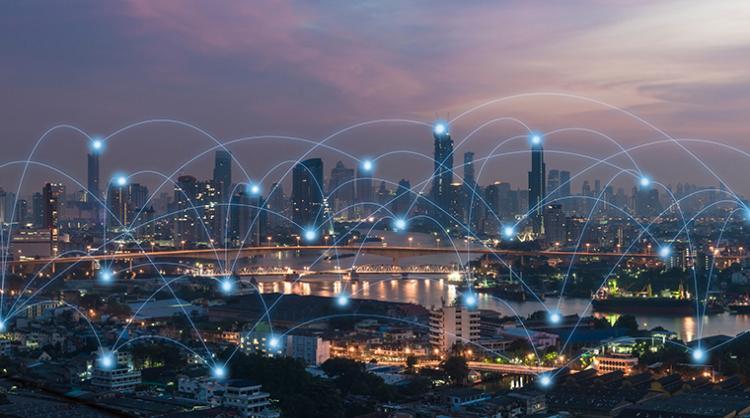DC Circuit Rejects Challenge to Access Stimulation Order
July 16, 2021 | by Andrew Regitsky

On July 9, 2021, the D.C. Circuit Court of Appeals rejected a consolidated challenge to the FCC’s 2019 Access Stimulation Order (Order) in Docket 18-155. The opinion was unanimous among the three judges that heard the case. While the Petitioners (a group of CLECs engaging in access stimulation and their conference calling partners) can seek a rehearing by the entire Court or appeal the decision to the Supreme Court, they are unlikely to win and should drop their challenge now.
The Petitioners appealed the Order in which the FCC addressed access stimulation that did not involve direct revenue sharing agreements. The Commission did so by:
Requiring access-stimulating LECs—rather than IXCs—to bear financial responsibility for the tariffed tandem switching and transport charges associated with the delivery of traffic from an IXC to the access-stimulating LEC’s end office or its functional equivalent.
Requiring access stimulating LECs to designate in the Local Exchange Routing Guide (LERG), or by contract, the route through which an IXC can reach that LEC’s end office or functional equivalent
Creating two alternative tests to determine of a LEC is engaging in access stimulation, one for CLECs and one for rural rate-of-return ILECs. Neither requires any revenue sharing agreement to be in place.
CLECs with an interstate terminating-to-originating traffic ratio of at least 6:1 in a calendar month are defined as engaging in access stimulation.
Rate-of-return LECs are engaging in access stimulation if they have an interstate terminating-to-originating traffic ratio of at least 10:1 in a three-calendar month period and 500,000 minutes or more of interstate terminating minutes-of-use per month in an end office in the same three calendar month period. As measured by an average over the same three calendar-month period.
The Commission adopted different triggers for CLECs as compared to rate-of-return LECs because there are structural barriers to rate-of-return LECs engaging in access stimulation, and a small but significant set of rate-of-return LECs can experience legitimate call patterns that would trip the 6:1 trigger.
Petitioners challenged the Order on three grounds: First, they argued that it exceeds the Commission’s statutory authority because it results in rates that are not “just and reasonable.” Second, the rule is arbitrary and capricious (unreasonable). And third, the Order violates the Administrative Procedures Act (APA). All were rejected by the Court.
Petitioners claim that since they would have to bear the cost of terminating calls and cannot recover their legitimate access costs under the new rules, the Access Stimulation Order violates sections 251(b)(5) and 252(d)(2) of the 1996 Telecommunications Act requiring reciprocal compensation for calls. Therefore, the Commission’s remedy is not “just and reasonable” as required by section 201(b). But this argument is demolished by the Court:
Even assuming the sections did limit the Commission’s authority under 201(b), Petitioners’ argument has no merit. They argue the sanction imposed on access stimulators is itself non-reciprocal and non-mutual because they can no longer recover access charges for calls they terminate—a circumstance which doesn’t apply to calls the access stimulator originates. This seems to us to be a rather labored and unpersuasive argument. Under Petitioners’ logic, if a local carrier’s ratio of incoming calls to outgoing were 100:1, the Commission would be powerless to prevent the access stimulator from recovering access fees despite being grossly disproportionate to its costs. And after all, the whole purpose of the FCC’s rule is to achieve a measure of reciprocity between the originating and terminating calls, and thereby reciprocity with the interexchange carriers. In sum, we think Petitioners’ statutory arguments are unpersuasive. (DC Circuit Court, July 9, 2021, Opinion, Case No. 19-1233 consolidated with Case 19-1234, pp. 10-11.
Petitioners next attack the premise of the Access Stimulation rule. They allege it is makes no sense (is arbitrary and capricious) for the FCC to conclude that consumers are disadvantaged by the stimulation of access charges since seventy-five million people use toll conferencing annually and IXCs receive $20.7 billion from their long-distance customers including ones calling conference centers. This amount is much greater than the $60–80 million in additional charges caused by access stimulators. However, the Court notes:
The flaw in the argument is that, as the Commission explained, it is impossible for the long-distance carriers to charge those [conference] users the marginal cost for these services. Section 254(g) of the Communications Act prevents them from charging customers directly for these costs. Since the costs are thus spread to all consumers, access stimulation raises the cost of calls for everyone. (Id, at p. 11).
Finally, Petitioners claim that the Access Stimulation rule which requires differential treatment of rate-of-return ILECs and CLECs even if reasonable violates the APA requirement that the final rule be a “logical outgrowth” of the original Notice of Proposed Rulemaking. However, this argument is also batted down by the Court:
The FCC’s position is clearly [the Order meets the APA requirements] because the NPRM explicitly asked whether the Commission should “modify the ratios or triggers”—plural—in the definition of access stimulation. That statement warned commenters that the prior 3:1 ratio could be modified. Granted, it did not explicitly suggest differential treatment. But since the Commission concluded that rate-of-return carriers were not at all access stimulators— a conclusion that Petitioners do not challenge—it would have been foreseeable that rate-of-return carriers would have been excluded altogether from any modification of the 2011 rule. Because even such an extreme differential treatment was foreseeable, the Order’s more limited differential ratios were a logical outgrowth of the notice. (Id. At p. 16).
It ought to be clear to the access stimulating LECs that it is time to stop fighting on this issue since they are not going to win in court. Better yet, the FCC should move the remaining switched access rates to bill-and-keep and eliminate all remaining arbitrage opportunities in the system.

